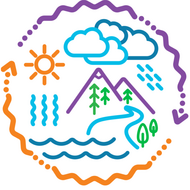Native American Stories Science Connections
(View Complete Item Description)The original Native American story component lesson was developed as part of an Office of Superintendent of Public Instruction (OSPI) and Washington State Leadership and Assistance for Science Education Reform (LASER) project funded through an EPA Region 10 grant. The stories were told by Roger Fernandes of the Lower Elwha Klallam tribe. Mr. Fernandes has been given permission by the tribes to tell these stories.As these lessons and stories were shared prior to the adoption of the Washington State Science Learning Standards in 2013, there was a need to align these stories with the current science standards. This resource provides a current alignment and possible lesson suggestions on how these stories can be incorporated into the classroom. This alignment work has been funded by the NGSS & Climate Science Proviso of the Washington State Legislature as a part of North Central Educational Service District's award.
Material Type: Activity/Lab, Lesson, Lesson Plan, Teaching/Learning Strategy


















